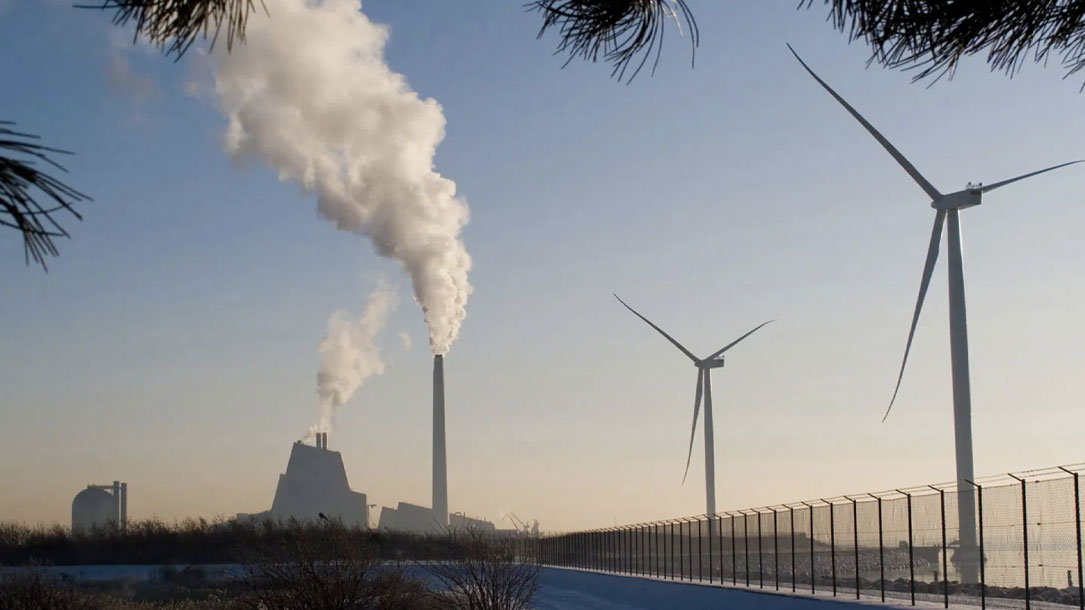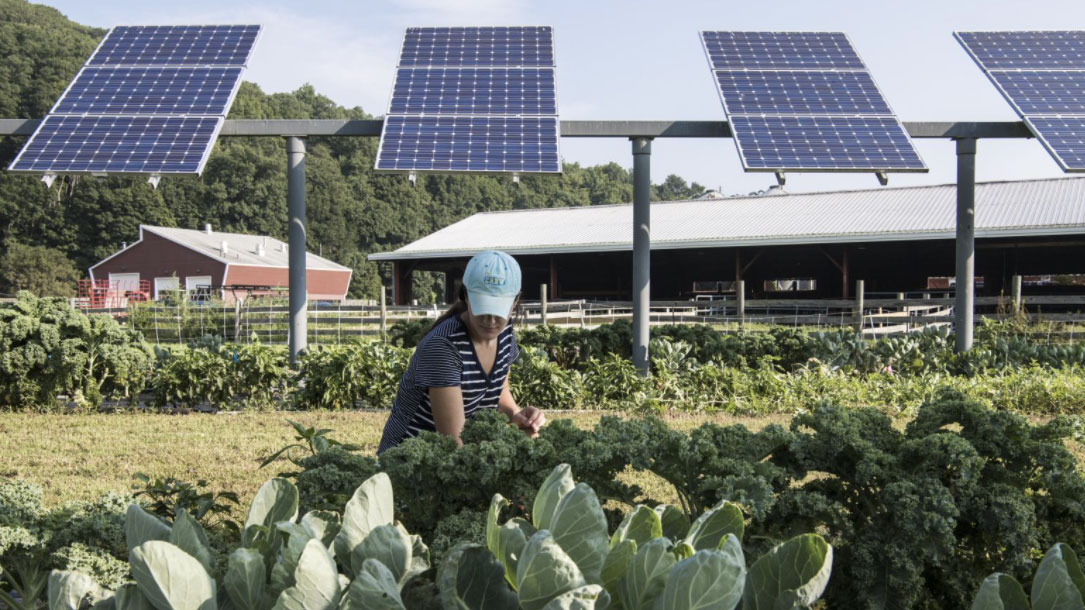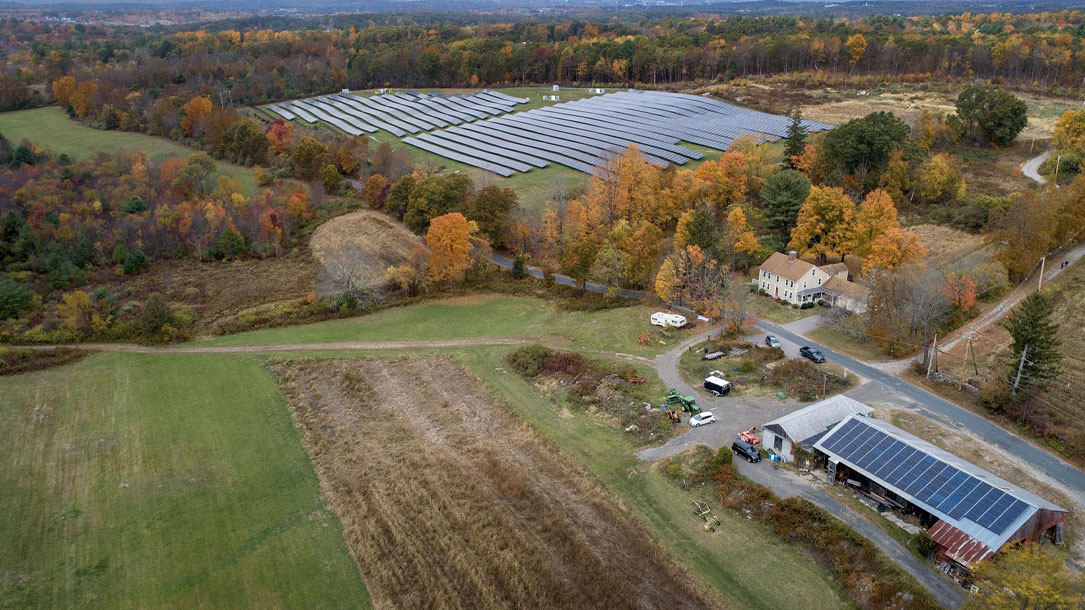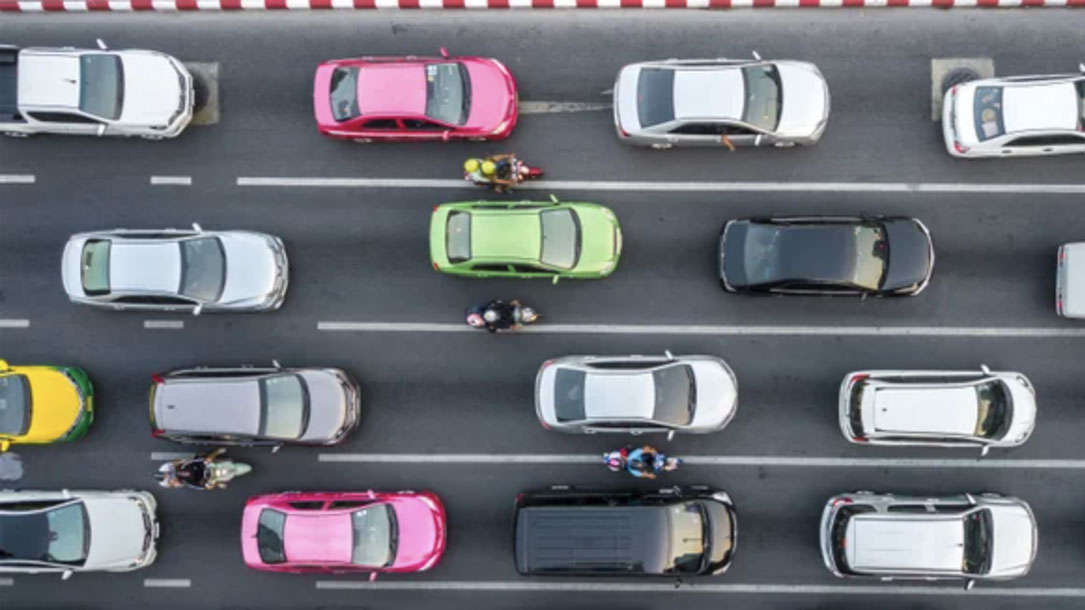
Greens: Divided on ‘clean’ energy? Or closer than they appear?
Solar, wind, and geothermal sources currently account for just 11% of U.S. electricity, with another 7% from hydroelectric dams, 20% from nuclear, 19% from coal, and 40% from gas. A host of energy modeling studies have concluded that renewable energy could be scaled up to supply 80-90% of U.S. electricity demand, but meeting the final 10-20% is exceedingly challenging.
The 2035 report by the UC Berkeley Goldman School of Public Policy estimated that the U.S. could achieve 90% emissions-free electricity by 2035, including 70% from wind and solar with batteries, 20% from nuclear, and 10% from gas…

How to have your solar farm and keep your regular farm, too
You may appreciate this short news clip from NPR
Clean, abundant solar power comes with a price. It requires lots of land, and in some places that’s provoking opposition from people who want to preserve farmland.
In southern New Jersey, for instance, a company called Dakota Power Partners wants to build an 800-acre solar power station, and the Pilesgrove Township planning board is hearing from local citizens who don’t like it one bit…

Agrivoltaics works better with leafy greens, root crops
[Solar] projects linked to agriculture have thus far shown the highest potential when combined with leafy greens such as lettuce and spinach, as well as with root crops such as potatoes, radishes, beets, and carrots. This is one of the conclusions of recent research developed on agrivoltaics by U.S. scientist Chad Higgins from the Department of Biological and Ecological Engineering at Oregon State University…

A new vision for farming: chickens, sheep, and…solar panels
Agrivoltaics doesn’t just include chickens. Other livestock can also roam around solar panels, and some researchers are experimenting with planting crops, too.
Animals that graze around solar fields offer several benefits, proponents of agrivoltaics say. Not only does their manure enrich the soil, their munching keeps plants from growing too tall and shading the panels. Another win: they lower vegetation maintenance costs, reducing the need for lawn mowers or landscapers…

Benefits of agrivoltaics across food, water, energy sectors
Food and energy security need not be competing objectives. In fact, taking a holistic, integrated approach to food-energy-water decision making can increase resiliency of both food and energy systems…

Farms will harvest food and the sun, as Massachusetts pioneers ‘Dual-Use’ Solar
Fickle weather and fluctuating prices make farming a risky business, so five years ago, [Paul] Knowlton installed a new cash crop: solar energy. He turned 19 acres into two solar energy fields. “Doing the solar was very beneficial,” he says. “In the wintertime there is no revenue for a farm. It’s a tough game.”
Knowlton wants to increase the production of solar power on his farm, expanding it to another 14 acres. But this time, cutting-edge technology is making it possible to harvest both the sun’s energy and crops on the same land. It’s called “agrivoltaics” or “dual-use solar”…Knowlton has nine children, and hopes solar will help the farm stay in the family. “We’re going to keep it for the next generation to enjoy,” he says.

Video: Solar shading for dairy cows
We all know Minnesota summers can be hot, especially for our grazing dairy herd. We’ve installed solar panels in our pasture to provide shade for our cows. Brad Heins, WCROC dairy scientist, and Kirsten Sharpe, graduate student, share more information…

Solar panels provide cow comfort
Research from the University of Minnesota on solar panels at dairy farms is leading to some interesting results. The panels produce electricity to run the farms, but also provide shade for the dairy cattle—thus improving cattle comfort.
A 30-kilowatt solar-powered system is in the pasture of the rotational grazing system at the West Central Research and Outreach Center. The center is located in Morris, Minnesota. According to University of Minnesota assistant professor and Extension Organic Dairy Management Specialist Brad Heins, the system provides shade for the center’s milking herd and energy for the milking parlor…

New York’s $226 billion pension fund is dropping fossil fuel stocks
“New York State’s pension fund, one of the world’s largest and most influential investors, will drop many of its fossil fuel stocks in the next five years and sell its shares in other companies that contribute to global warming by 2040, the state comptroller said on Wednesday.
With $226 billion in assets, New York’s fund wields clout with other retirement funds and its decision to divest from fossil fuels could accelerate a broader shift in global markets away from oil and gas companies, energy experts and climate activists said…”

Ninety percent of U.S. cars must be electric by 2050 to meet climate goals
The United States is not expected to electrify passenger cars fast enough to stay on track with the Paris climate accord’s goal of limiting global warming to 2 degrees Celsius, according to a new study.
Published in the journal Nature Climate Change yesterday, the study by engineers at the University of Toronto concludes that 90% of light-duty cars on American roads would need to be electric by 2050 to keep the transportation sector in line with climate mitigation targets…












